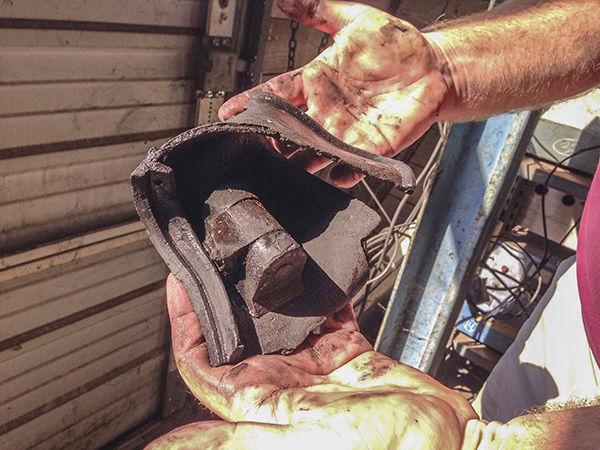The remains of a Civil War ironclad at the bottom of Georgia’s Savannah River are being unearthed, and A&M faculty and students have been contacted to help preserve artifacts.
The U.S. Army Corps of Engineers began excavating the ship in January. The Corps plans to dredge and deepen the Savannah Shipping Channel, where the CSS Georgia rests. To continue forward with the plans, the Confederate ship had to be moved.
Artifacts from the ship are in the process of being excavated, processed and shipped to the Conservation Research Laboratory on Riverside Campus, where they will be conserved.
Jim Jobling, project manager at CRL, said small items are being received at the moment, such as nails and spikes, but the team expects to receive larger items in the oncoming months, such as propellers, cannons and even the engines.
“We’re going to get four cannons — three of them are big ones, between eight to nine feet long and one of them is about six feet long,” Jobling said. “We’re also going to get a propeller and shaft. The shaft is 12 feet long and the propeller is about six feet in diameter.”
CRL expects to conserve artifacts from the CSS Georgia over the next three to four years due to the comprehensive process involved in conserving each item.
“These things are going to take time,” Jobling said. “They’ve got to be cleaned, and then they go through their electrolytic reduction process, and that’ll take a couple of years because they’re big —smaller artifacts take less time.”
D.L. Hamilton, anthropology professor and director of CRL, said the lab is one of the longest continuously-run conservation labs in the country, and the only lab in the United States capable of handling large artifacts like cannons.
“We had already done the Westfield and another civil war ship off the coast of Texas, and with the CSS Georgia we’re the only laboratory that can handle it,” Hamilton said. “Mainly it’s our reputation — they know this is where you come if you want a large artifact, or if you want a large project to be undertaken.”
Parker Brooks, an anthropology graduate student doing fieldwork in Savannah, said he began working at CRL as an undergraduate volunteer before becoming employed last spring.
“It was an awesome opportunity to really get my hands on history and to actually see what it’s like to do something in the field of anthropology or the field of archaeology,” Brooks said.
The fieldwork in Savannah is expected to last until August, including the excavation work and the following reburial of certain items, Brooks said.
“Due to limited resources, the iron for the ship was basically railway iron, like what they run trains on,” Brooks said. “That was their armor plating, so we have tons and tons of these railroad iron ties laying on the bottom, so not all of these will be conserved, they’ll be reburied in the back river.”
After the Civil War, the U.S. Navy assumed all of the Confederacy’s naval assets, including the CSS Georgia, so the artifacts conserved at CRL will eventually be displayed in a museum for the general public, and will not be available for any private buyer.
A&M effort helps preserve Civil War ship
February 23, 2015

Provided — THE BATTALION
An A&M research team received a porthole cover from the ship that had folded over time.
Donate to The Battalion
Your donation will support the student journalists of Texas A&M University - College Station. Your contribution will allow us to purchase equipment and cover our annual website hosting costs.



















